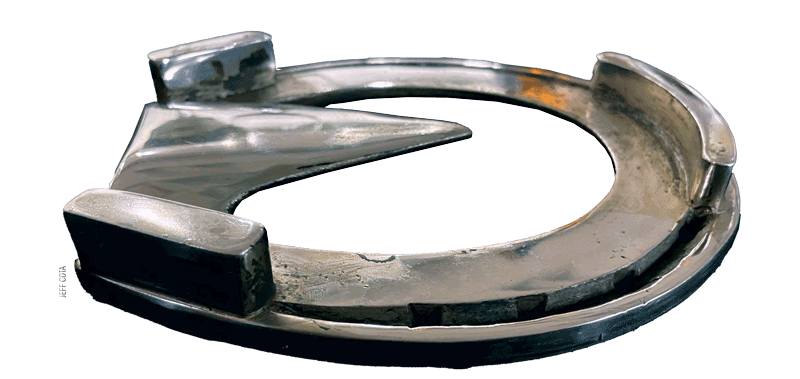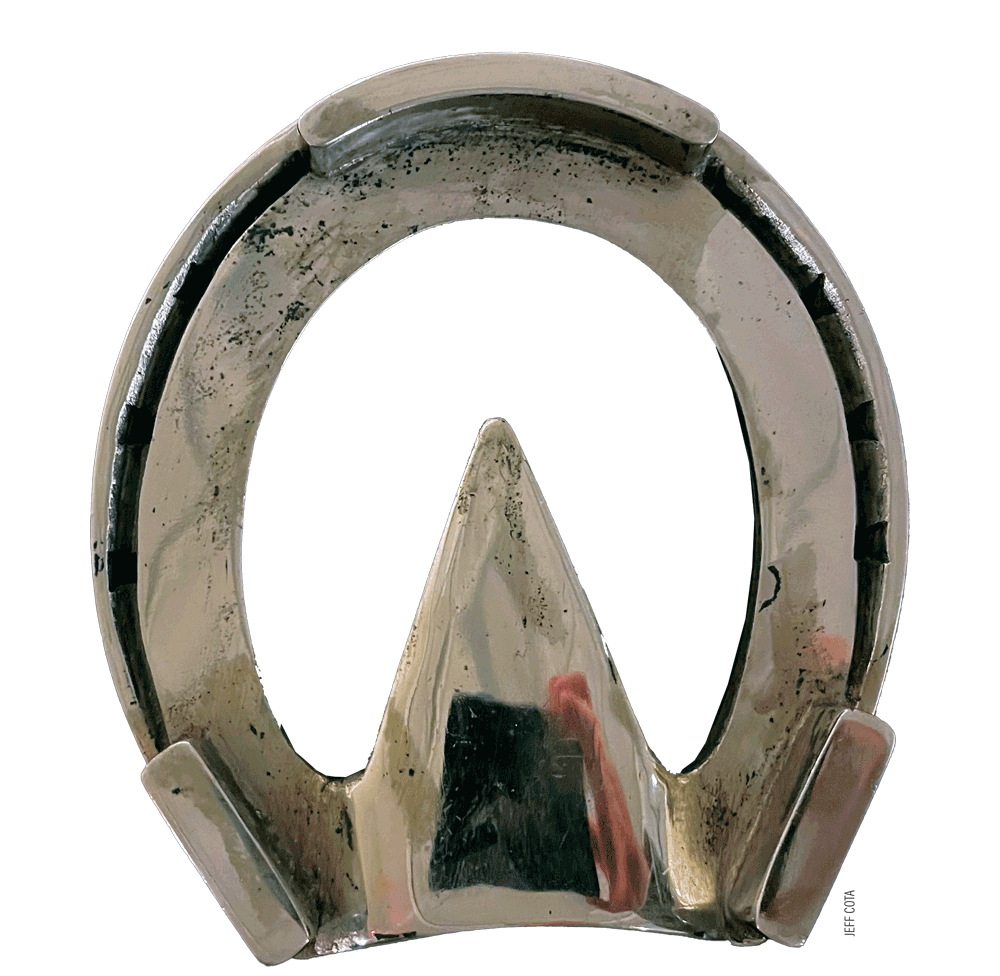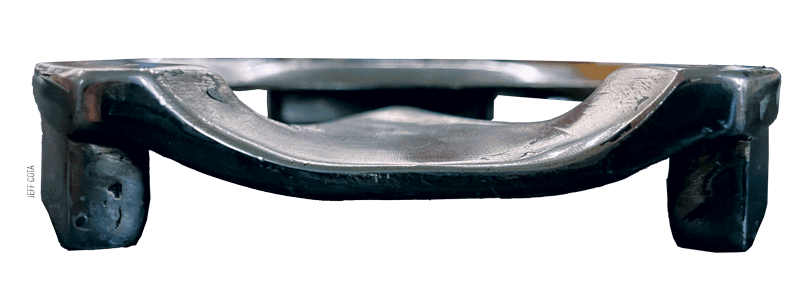
ANSWER:
When Henry Asmus was shoeing horses in the early 1900s, his job was keeping horses working in the steep hills of Ithaca, N.Y.
The founding instructor of Cornell University’s Farrier School forged an impressive collection of therapeutic shoes to handle scores of pathologies — many of which still hang on the walls of the shop now manned by Steve Kraus. The featured shoe, however, has a new home — the International Horseshoeing Hall of Fame at the Kentucky Derby Museum in Louisville, Ky. Asmus was inducted into the Hall of Fame during the 2024 International Hoof-Care Summit — 85 years after his death.
The full frog-pressure horseshoe “prevents the bar from pressing into the rear of the diseased frog, as in the case of thrush,” Asmus wrote in “Horseshoes of Interest to Veterinarians” that was part of the “Annual Report of the New York State Veterinary College.”
The deep-seated shoe features raised calkins at the end of the heel branches and toe. The recessed bar is forge welded away from the frog. The nail holes aren’t as coarse as today’s shoes, most likely because they were on short shoeing cycles, Kraus says.
If you have a horseshoe or tool that you would like to share, email it to jcota@lessitermedia.com.
SOURCE:
Steve Kraus, CJF, APF, Cornell University Farrier Program









Post a comment
Report Abusive Comment